
The straight-eight engine or inline-eight engine is an eight-cylinder internal combustion engine with all eight cylinders mounted in a straight line along the crankcase. The type has been produced in side-valve, IOE, overhead-valve, sleeve-valve, and overhead-cam configurations.
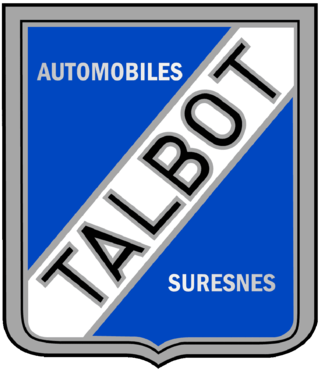
Talbot-Lago was a French automobile manufacturer based in Suresnes, Hauts de Seine, outside Paris. The company was owned and managed by Antonio Lago, an Italian engineer that acquired rights to the Talbot brand name after the demise of Darracq London's subsidiary Automobiles Talbot France in 1936.

A multi-valve or multivalve engine is one where each cylinder has more than two valves. A multi-valve engine has better breathing, and with more smaller valves may be able to operate at higher revolutions per minute (RPM) than a two-valve engine, delivering more power.
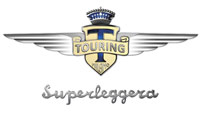
Carrozzeria Touring Superleggera is an Italian automobile coachbuilder. Originally established in Milan in 1925, Carrozzeria Touring became well known for both the beauty of its designs and patented superleggera construction methods. The business folded in 1966. In 2006 its brands and trademarks were purchased and a new firm was established nearby to provide automotive design, engineering, coachbuilding, homologation services, non-automotive industrial design, and restoration of historic vehicles.

Isotta Fraschini is an Italian luxury car manufacturer, also producing trucks, as well as engines for marine and aviation use. Founded in Milan, Italy, in 1900 by Cesare Isotta and the brothers Vincenzo, Antonio, and Oreste Fraschini, in 1955 it was merged with engine manufacturer Breda Motori and renamed F.A. Isotta Fraschini e Motori Breda.
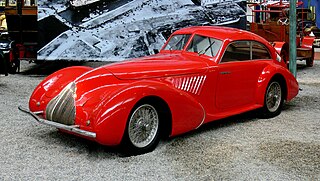
The Alfa Romeo 8C was a range of Alfa Romeo road, race and sports cars of the 1930s.
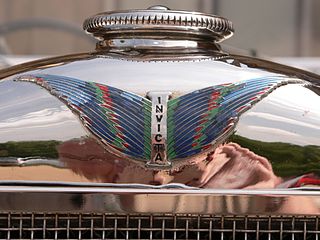
Invicta is a British automobile manufacturer. The brand has been available intermittently through successive decades. Initially, the manufacturer was based in Cobham, Surrey, England, from 1925 to 1933, then in Chelsea, London, England, from 1933 to 1938 and finally in Virginia Water, Surrey, England, from 1946 to 1950. More recently, the name was revived for the Invicta S1 sports car produced between 2004 and 2012.
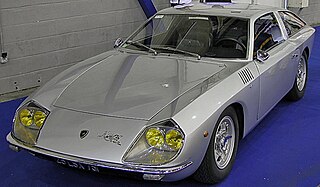
The Lamborghini Flying Star II was a one-off concept car built by Carrozzeria Touring Superleggera in 1966 on a Lamborghini 400 GT chassis. It debuted at the 1966 Turin Auto Show.

Lorraine-Dietrich was a French automobile and aircraft engine manufacturer from 1896 until 1935, created when railway locomotive manufacturer Société Lorraine des Anciens Etablissements de Dietrich et Cie de Lunéville branched into the manufacture of automobiles. The Franco-Prussian War divided the company's manufacturing capacity, one plant in Niederbronn-les-Bains, Alsace, and the other in Lunéville, Lorraine.
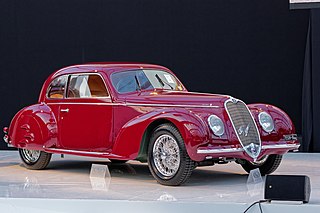
The Alfa Romeo 6C name was used on road, race, and sports cars produced between 1927 and 1954 by Alfa Romeo; the "6C" name refers to the six cylinders of the car's straight-six engine. Bodies for these cars were made by coachbuilders such as James Young, Zagato, Touring Superleggera, Castagna, and Pinin Farina. Beginning in 1933 there was also a 6C version with an Alfa factory body, built in Portello. In the early 1920s Vittorio Jano received a commission to create a lightweight, high performance vehicle to replace the Giuseppe Merosi designed RL and RM models. The car was introduced in April 1925 at the Salone dell' Automobile di Milano as the 6C 1500. It was based on Alfa's P2 Grand Prix car, using a single overhead cam 1,487 cc in-line six-cylinder engine, producing 44 horsepower. In 1928 the 1500 Sport was presented, which was the first Alfa Romeo road car with double overhead camshafts.

The Lancia Artena is a passenger car produced by Italian car manufacturer Lancia from 1931 until 1936, and from 1940 until 1942 chiefly for army and government use. It was powered by a 2-litre Lancia V4 engine, while chassis and factory bodies were shared with the more luxurious 2.6-litre V8-engined Lancia Astura. Total production amounted to 5,567 examples.

The Isotta Fraschini Tipo 8A is a luxury car made by the Italian manufacturer Isotta Fraschini from 1924 until 1931. It was the successor to the Tipo 8 model, with a new 7.3-litre straight-eight engine to replace the 5.9-litre unit used in the previous model. This new engine could produce 115–160 metric horsepower (85–118 kW). This was the most powerful mass-produced straight-8 engine in the world at that time. The Tipo 8A was offered only with bare chassis and engine for the coachbuilders.

Saoutchik was a French coachbuilding company founded in 1906 and based in Neuilly-sur-Seine near Paris. The company was one of the best-known coachbuilders in France in the 1920s and 1930s and, together with Figoni et Falaschi and Franay, is considered one of the most important representatives of the "Baroque" style in French coachwork in the 1930s and 1940s.

The Isotta Fraschini Tipo 8B is a luxury car made by Italian manufacturer Isotta Fraschini between 1931 and 1934.

The Isotta Fraschini Tipo 8C Monterosa was a prototype car, designed in secret during World War II, of which between three and six were manufactured by Isotta Fraschini.
The Isotta Fraschini T8 and T12 are Italian concept cars revealed in 1996 and 1998 respectively as an attempt by Isotta Fraschini to resurrect their prestigious luxury automotive brand name of the early 20th century.
The 1905 Isotta Fraschini Tipo D was an early Italian race car with a 120 hp, 17.2 liter overhead valve, overhead cam four cylinder engine.

The Isotta Fraschini Tipo FE was an early Italian race car produced by Isotta Fraschini from 1908 to 1910. The Isotta Fraschini Tipo FENC is the road version and is considered one of the earliest examples of a sports car.

The Isotta Fraschini Tipo KM is a luxury car produced between 1910 and 1914 in Italy. Only 50 were built. Many of those 50 examples were exported to the United States, where the company had a branch on New York's Broadway.




















